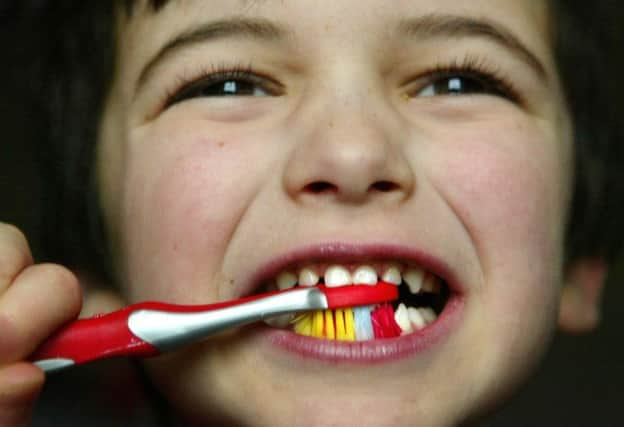Decay-busting toothpaste for children in Scotland


According to recommendations by the Scottish Intercollegiate Guidelines Network (SIGN), youngsters with a higher chance of developing tooth decay, such as those from deprived backgrounds, should use products with higher concentrations of fluoride.
Such toothpastes can only be issued to parents on prescription, with toothpastes with lower levels of fluoride available in shops.
Advertisement
Hide AdAdvertisement
Hide AdSIGN, part of Healthcare Improvement Scotland (HIS), also sets out further advice to boost child dental health, including twice-yearly fluoride varnishing by dentists.
Tooth decay is caused by a build-up of plaque and other bacteria, but dental health among children in Scotland has improved in the last 30 years.
In 1988 only 42 per cent of Primary 1 children had no obvious dental decay, but by last year this had increased to 73 per cent.
But large numbers of children still suffer poor dental health, particularly those from more disadvantaged backgrounds. The most recent figures show that 82 per cent of children in the least deprived group had no signs of decay, falling to 61 per cent in those from the most deprived backgrounds.
The new guidance says that most children up to the age of 18 should use toothpastes ranging from 1,000 to 1,500 parts per million fluoride (ppmF).
But it said that following risk assessment, children up to the age of ten years who are at increased risk of tooth decay, due to factors such as deprivation and poor diet, should be advised to use toothpastes at 1,500 ppmF.
And those aged 10 to 16 years who are at increased risk should use toothpastes at a concentration of 2,800 ppmF.
Toothpastes from around 700 to 1,500 ppmF are available in shops, while products above 2,800 ppmF are only available on prescription.
Advertisement
Hide AdAdvertisement
Hide AdThe guidance says that parents play the greatest role in preventing tooth decay and there is no evidence to show that powered, electric toothbrushes were more effective than manual toothbrushes.
Derek Richards, chair of the group which developed the guidance and director of the Centre for Evidence-based Dentistry at Dundee University, said: “The recommendations recognise that dental care is not as straightforward as most people would expect and should be managed on an individual basis, by the professionals.
“But there is also a bigger part for parents to play as they should be aware of useful tips such as checking the level of fluoride in toothpaste and monitor the amount they put on the brush for young children.”
Dr Nigel Carter, chief executive of the British Dental Health Foundation, said: “High fluoride toothpaste is an effective way of preventing tooth decay, and fluoride varnish treatments are already available for children from the age of three.
“It is for those children who have had their oral health overlooked that high fluoride toothpaste on prescription becomes necessary, particularly in deprived areas of the country.”